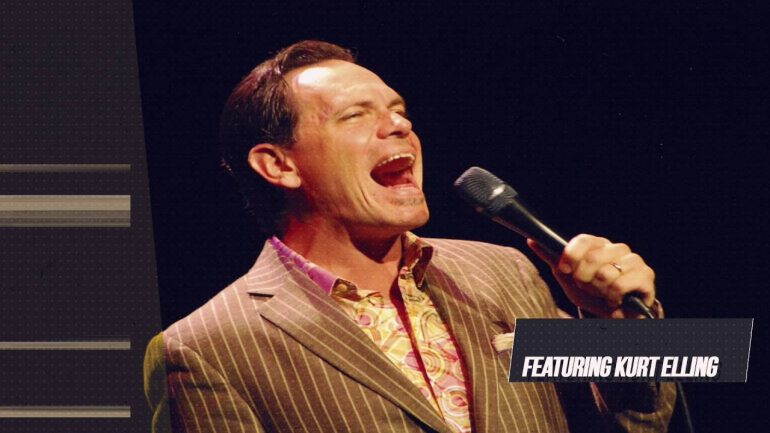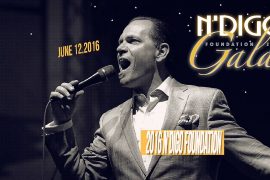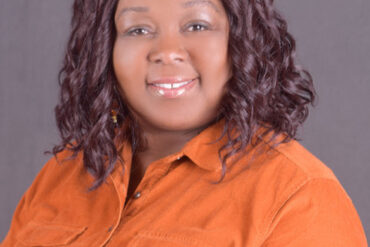By David Smallwood
Kurt Elling, who performs Sunday, June 12 at the N’DIGO Scholarship Gala, is one of the world’s leading jazz vocalists.
He is considered a successor in the royal bloodline of male jazz singers that stretches from Louis Armstrong through Mel Torme, Joe Williams, and Johnny Hartman to Jon Hendricks and Kevin Mahogany.
Called the “standout male jazz vocalist of our time” by the New York Times, Elling has been named “Male Singer of the Year” eight times by the Jazz Journalists Association and won every Down Beat Critics Poll for the last 14 years.
His soaring vocal flights, edgy lyrics, and unique timing have garnered Elling a dozen Grammy nominations since his debut album Close Your Eyes in 1995.
For that effort, he was nominated for Best Jazz Vocal Performance. His 2009 work, Dedicated to You: Kurt Elling Sings the Music of Coltrane and Hartman, recorded live at Lincoln Center, won a Grammy for Best Jazz Vocal Album.
The year he won the Grammy, 2009, Elling gave a command performance at President Barack Obama’s first state dinner and was accompanied by the National Symphony Orchestra conducted by Marvin Hamlisch.
Elling’s rich baritone spans four octaves and features both technical mastery and emotional depth. His repertoire includes original compositions and modern interpretations of standards, all of which are springboards for inspired improvisation, scatting, spoken word, and poetry.
Elling is a renowned artist of vocalese – the writing and performing of words over recorded improvised jazz solos. He has set his own lyrics to the improvised solos of Wayne Shorter, Keith Jarrett and Pat Metheny, if you can imagine the difficulty that would entail.
His words are informed by a powerful poetic spirit and Robert Pinsky, former poet Laureate of the United States, has said, “In Kurt Elling’s art, the voice of jazz gives a new spiritual presence to the ancient, sweet and powerful bond between poetry and music.”
Elling is a world-renowned artist – before he plays the N’DIGO Gala, since Memorial Day Weekend he will have performed in Seoul, Korea, Sidney and Melbourne, Australia, and Washington, D.C.
After the N’DIGO date, Elling will perform concerts in the Ukraine, Paris, Germany, Poland, Bulgaria, Denmark, The Netherlands, Italy, Istanbul, Norway, Spain and Portugal.
That’s a lot of globe trotting for an artist who is one of Chicago’s very own and who was one college credit away from probably not being a professional jazz singer at all.
Home Town Hero

Chicago-born in 1967, but raised in Rockford, Elling became interested in music early through his father, who was the choirmaster in the local church. Kurt sang in the church and school choirs and also learned piano, drums, violin and French horn.
In high school, Elling sang in the choir because he said, “While it was undeniably uncool and geeky and all that, to be in the choir, I did it anyway, because it was reliably beautiful, and it was rewarding, and it gave me gifts of experience and friendships.”
One of those experiences was singing the National Anthem with his high school madrigal choir in front of his first large crowd, over 40,000 people.
He attended Gustavus Adolphus College in St. Peter Minnesota, majoring in history, minoring in religion, and singing in the 70-voice a cappella choir that traveled to Europe.
But a funny thing happened at Adolphus – Elling was exposed to jazz for the first time and got hooked on Herbie Hancock, Ella Fitzgerald, Dexter Gordon and Dave Brubeck, among others.
After graduating from Adolphus in 1989, he enrolled for his graduate work at the University of Chicago Divinity School to study for a master’s degree in philosophy of religion. His life plan then was to work in religious academia or for the World Council of Churches.
But Elling quickly realized that didn’t mean a thing because it didn’t have that swing! He started becoming a regular in the city’s jazz clubs and doing jazz gigs once a week. One of his first shows was at the old Milt Trenier’s basement jazz club.
“I was sitting in clubs at night and by that time, I was deeply in love with jazz music,” Elling recalls. “The more that I met and interacted with real jazz people in the clubs and concert settings, the more they encouraged me and pulled me in.”
Elling reached a crossroad. He says, “By day I was (studying theology), trying to get a handle on that, and at night, I was sitting-in in clubs, and of course you can’t do both and be effective. Eventually, Saturday night won out over Sunday morning.”
Elling stayed in school until January 1992, when he quit just one credit short of graduation and his master’s degree to pursue his real calling.
To survive, he worked day jobs as a furniture mover and a bartender, sang at weddings, and got whatever money he could from his club gigs to pay the $150 rent for the one-room basement apartment he lived in while honing his voice.
Elling notes that he never took a vocal class, but says, “Because I didn’t go to music school, I had to learn everything through experience, determination, hard work, independent study, and asking questions and paying attention to musicians when they spoke.”
A Career Is Launched

By 1995, he had gotten to know pianist Laurence Hobgood, who would become his long-time collaborator and who had a steady Monday night gig at the Green Mill.
With hardly any experience in the studio, Elling convinced Hobgood that he was ready to record. With what Elling calls “the financial assistance of an angelic friend,” they lined up some studio recording dates and came out with a tape of nine songs.
The demo was appreciated by local musicians who suggested that it be sent to a manager in Los Angeles named Bill Traut, who in turn sent it to Blue Note Records President Bruce Lundvall. That all happened within three weeks of the demo being made.
Elling says, “Bruce tells the story that he was in the back of his car in Manhattan on his way to the dentist when he began listening to the demo.
“I don’t think he got through four cuts before he looked on the cassette to see who was singing. As it happened, my home phone number was still taped to it. So he called the number.
“Now, I don’t know how one is supposed to act when one is an unknown 25-year-old jazz hopeful and one gets a call from the president of Blue Note Records at nine o’clock on a Wednesday morning, but I was still half asleep from some $30 gig the night before. This made it possible for me to come off much cooler about the whole thing than I could have ever acted otherwise.
“He said, ‘Hello! Is this Kurt Elling? Well this is Bruce Lundvall from Blue Note Records. I have your tape playing right now in my car’ – and he holds the phone out for me to hear.
“‘Cool,’” I said.
“He says, ‘You’re darn right, it’s cool! I love this! Listen, you haven’t signed with anybody yet, have you? I have got to have you as a Blue Note artist. When are you playing next?’
“I said, ‘Uh, this Monday in Chicago at a club called the Green Mill.’
“‘That’s great!’” Bruce says. “‘I am going to fly out there and meet you, young man. I want to have a signed contract by the end of this month! Is that okay with you?’”
“I said, ‘Sure, sounds hip,’ but needless to say, I did not keep my cool for long once the phone was back on the hook. But Bruce was true to his word and we met the first time at the Green Mill the next Monday night and signed the papers not long after.”
Most of the material from that demo tape went into Elling’s debut album Close Your Eyes the same year, which was nominated for the Grammy Award. And that’s how legendary careers are made.





